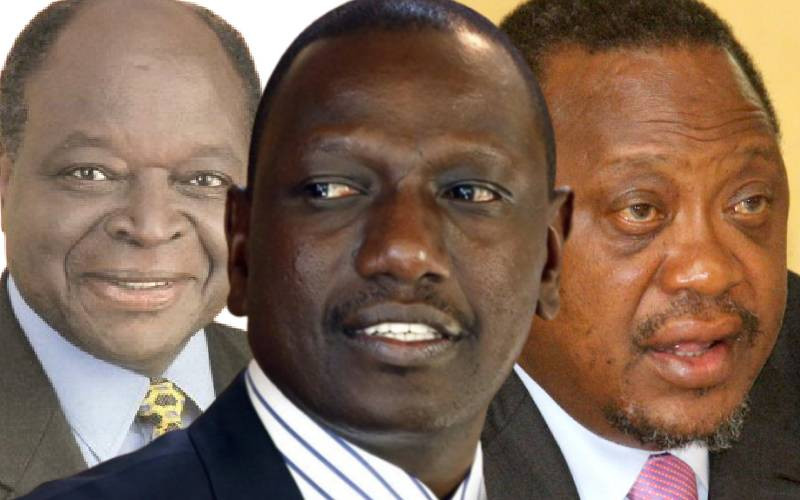By XN Iraki
“The visit to China by President Uhuru Kenyatta has opened a debate on whether it’s time Kenya turned East,” read an article titled ‘China to fasten her economic growth’. The President signed deals worth billions of shillings, mostly targeting infrastructure projects from rails to highways. Most columnists and opinion makers seem convinced that looking East is the way to go. The argument seems very convincing if you have experienced the Thika super-highway or ever visited China.
But let’s dig deeper. What is attracting us to the East? Some argue it’s a reaction to ICC and all its politics. But we went East long before the ICC case, with Toyota replacing Morris, Peugeot and Leyland on our roads.
Even Marco Polo was there... We see economic inspiration in the East espoused by the rise of China, Japan, Taiwan, Singapore, and South Korea. Interestingly, we see what we want in the East; we do not see India, the pharmacy of the world with a billion people, democratic, and just as advanced as China. Both are nuclear powers.
But perhaps we are not asking a better question; why did the East rise? Interestingly, the East rose by looking West! Japan, China and Asian tigers grew economically by looking West. These countries realised the West was ahead of them, particularly in science and technology They set off on a deliberate journey to catch up. They sent their citizens to go and study these subjects in the West. Today, the Chinese or Asians in general dominate science and technology in the West. Look at the faculty of science or technology department of any major US university.
The famous Silicon Valley is one-third Asian. Asians long realised that the dominance of the West in economics and even war was based on superior science and technology. That is what runs Chinese factories and Indian pharmacies. What is even more interesting is that the Asians were selective in going West; they kept their cultures, which is a great anchor in a turbulent world.
Weak courses
We looked West but we got more interested in soft issues like democracy, human rights, and Western names and religion. Imagine if all the churches in Kenyan were small factories. We did not even understand capitalism; if we did there would be less corruption. When pioneering Kenyans went to study in the West, including the famous airlift, they focused on social sciences.
Would it have made a difference if Kenya’s first President studied engineering instead of anthropology?
What if our first Ph.D student, Gikonyo Kiano, studied physics instead of political science? Interestingly, one year after Dr Kiano got his Ph.D, CV Raman, an Indian, won a Nobel Prize in physics in 1930. His nephew, Subrahmanyan Chandrasekhar, won another Nobel Prize in 1983. Amartya Sen (Indian) won in economics in 1998.
While looking East, we must go beyond money; we need to absorb some of the Eastern thinking. In addition to science and technology, the East is a believer in family values. While some countries in Europe have more than 50 per cent of their children born to unmarried mothers, countries like Japan have less than two per cent.
Divorce is also rare. Family values might be a greater economic stimulus than even science and technology. There are good reasons to look East, but geographically speaking, West is also part of the East. If you keep looking beyond China or India, you will come to America and even Europe. Let us look for great ideas wherever they can be found — east, west, north or any other direction — and use our creativity and ingenuity to come up with a home grown economic model that takes care of our uniqueness in terms of culture, history and even location.
 The Standard Group Plc is a
multi-media organization with investments in media platforms spanning newspaper
print operations, television, radio broadcasting, digital and online services. The
Standard Group is recognized as a leading multi-media house in Kenya with a key
influence in matters of national and international interest.
The Standard Group Plc is a
multi-media organization with investments in media platforms spanning newspaper
print operations, television, radio broadcasting, digital and online services. The
Standard Group is recognized as a leading multi-media house in Kenya with a key
influence in matters of national and international interest.
 The Standard Group Plc is a
multi-media organization with investments in media platforms spanning newspaper
print operations, television, radio broadcasting, digital and online services. The
Standard Group is recognized as a leading multi-media house in Kenya with a key
influence in matters of national and international interest.
The Standard Group Plc is a
multi-media organization with investments in media platforms spanning newspaper
print operations, television, radio broadcasting, digital and online services. The
Standard Group is recognized as a leading multi-media house in Kenya with a key
influence in matters of national and international interest.








